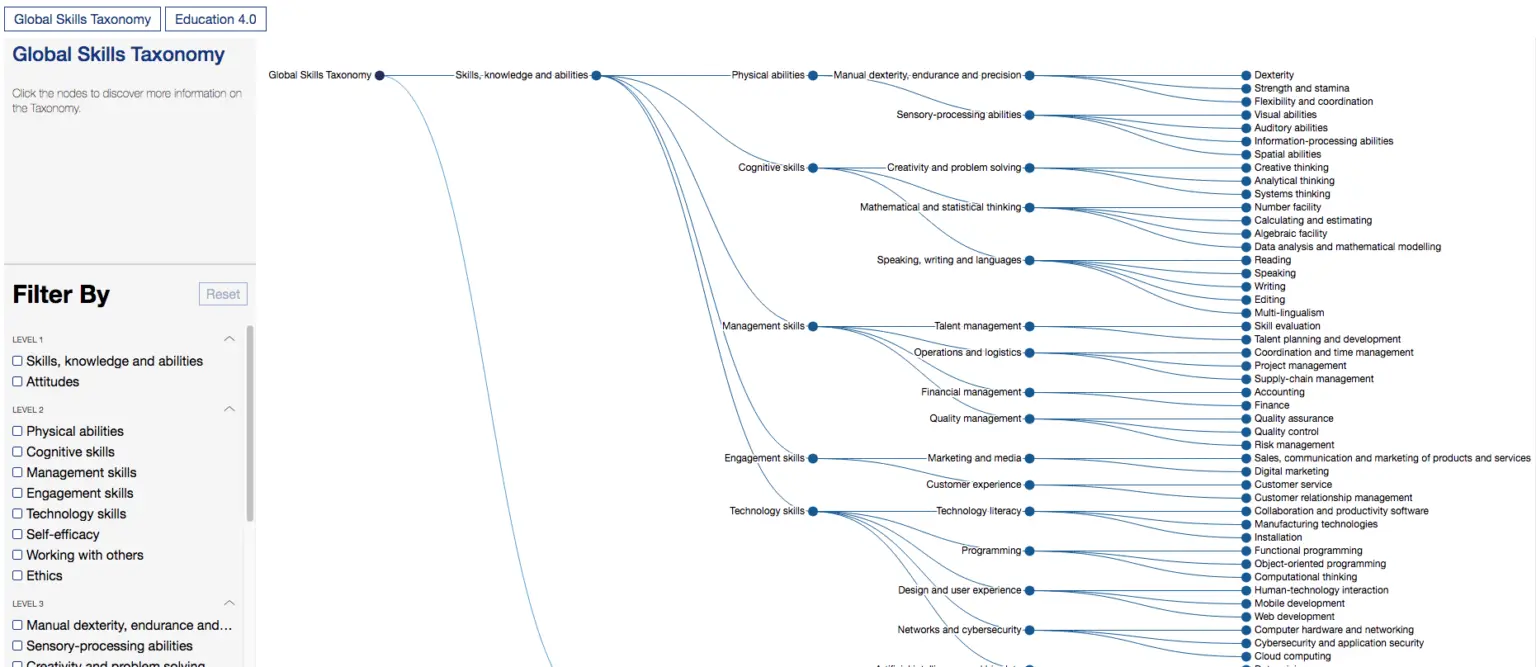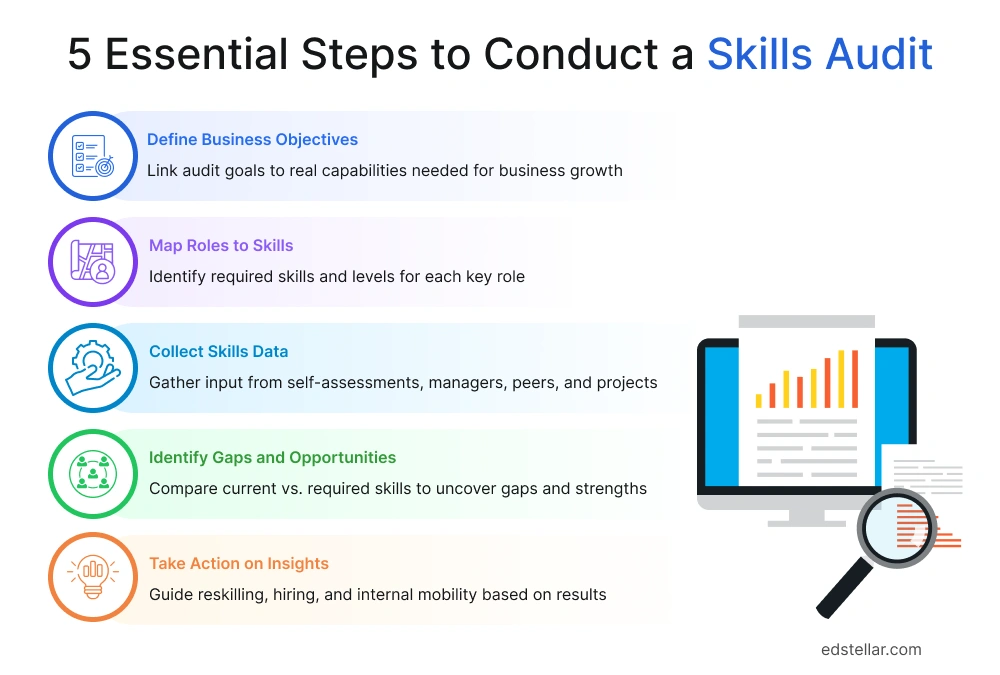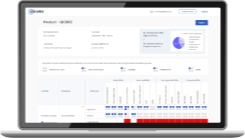
Every organization says it wants the best talent, but most haven’t taken the time to map the skills they already have. Not because they aren’t tracking performance, or investing in learning, or hiring smart people. But because no one’s taken the time to look across the workforce and ask: do we actually know what our people are capable of, today, right now?
In most cases, the answer is no. That’s when problems start to surface, open roles stay vacant while existing talent is overlooked, reskilling efforts fall flat because they’re based on assumptions, and talent mobility within the organizations slows down not from lack of intent, but from lack of visibility into skills, projects and channels to fill roles internally.
According to a report from the Institute for Corporate Productivity, only 30% of organizations feel they have the necessary skills for the future, yet just 10% maintain a full skills inventory covering all employees.
A Mercer study found that companies mapping skills to individuals are nearly twice as likely to attract in-demand skills, highlighting the value of structured skills audits.
Organizations are increasingly realizing that solving for talent isn't just about hiring more, it's about understanding better. As they move toward a skills-based approach to workforce planning, development, and mobility, one thing is becoming clear: visibility is everything. A skills audit is one of the most critical steps in this shift. It helps organizations uncover existing capabilities, identify gaps with precision, and align workforce development efforts directly with business strategy.
In this blog, we take a closer look at what a skills audit really is, why it matters now more than ever, and how to conduct one effectively. From understanding its key components to learning how to avoid common pitfalls, you'll walk away with a clear roadmap for putting a skills audit into action.
What Is a Skills Audit and Why Does it Matter?
“We are moving into a world in which jobs no longer define work, but by the skills people have.”
A skills audit is a structured process that evaluates employee competencies against current and future business needs. It offers a clear, data-driven view of what skills exist across the organization, where gaps lie, and how to bridge them through development or hiring.
Unlike traditional reviews, a skills audit captures both technical and behavioral skills, using sources like self-assessments, manager evaluations, training histories, and project outcomes. This allows leaders to map workforce capabilities to strategic priorities, identify internal mobility opportunities, and future-proof talent decisions.
Today, rapid technological disruption and evolving business models demand workforce agility. According to the World Economic Forum, 50% of employees will need the reskilling by 2026 to remain relevant.
A skills audit addresses this gap by enabling:
- Strategic workforce planning
- Smarter learning investments
- Succession and leadership pipeline visibility
- Faster response to change
Ultimately, it empowers organizations to align their people with their growth strategy, before disruption forces them to make reactive decisions.
Core Components of Skills Audit
In 2026, organizations navigating technological disruption, talent shortages, and hybrid work models must move beyond surface-level workforce evaluations. A modern skills audit, designed around strategic priorities, intelligent data systems, and active stakeholder engagement, can unlock deep insight into workforce capabilities and readiness. Below are the essential components that make today’s skills audits effective, scalable, and future-proof.

- Skills Taxonomy: A skills taxonomy is the structured vocabulary that defines and categorizes all the skills relevant to your organization, spanning technical, behavioral, leadership, and domain-specific capabilities. It ensures consistency in how skills are named, grouped, and measured across departments and job levels. In a skills audit, the taxonomy acts as the reference point against which employee skills are assessed. Without it, skill data becomes fragmented and incomparable. A well-structured taxonomy also lays the foundation for skills-based learning, performance management, and internal mobility at scale.

- Skills-to-Role Proficiency Framework: This framework maps the skills required for each role in the organization, along with the expected proficiency levels, from foundational to expert. Sometimes called a competency model or role-based skills profile, it answers a critical audit question: What skills should someone in this role actually have? It enables precise gap analysis by comparing actual skill levels with role expectations. Over time, this framework supports targeted learning journeys, skills-based hiring, and transparent career progression, ensuring talent development efforts are aligned with role realities.
McKinsey & Company notes that companies with clearly defined role-skill maps are more effective at identifying internal talent pools and designing custom learning journeys.
- Business Context: Business context refers to the strategic drivers that shape the scope and focus of the audit, such as digital transformation, regulatory demands, market expansion, or innovation goals. It ensures the audit isn’t a generic HR exercise, but a focused effort aligned with what the organization actually needs to compete and grow. Business context helps prioritize which roles, teams, or capabilities to audit first. When embedded into the audit process, it ensures outcomes directly support workforce planning, succession, and operational readiness.
- Governance Model: A governance model defines who owns the audit, how often it is updated, and how it integrates with broader talent processes. This includes establishing roles and responsibilities such as HR, L&D, business leaders, and analytics teams as well as setting protocols for data handling, feedback cycles, and audit refreshes. Good governance transforms a one-off audit into a continuous capability-building system. It ensures findings are acted upon, embedded into decision-making, and tracked over time unlocking long-term impact in workforce development, reskilling, and leadership planning.
5 Practical Steps to Conduct a Skills Audit Using a Skills Intelligence Platform
In today’s skills-based economy, traditional workforce audits fall short. Organizations need agile, data-rich tools to evaluate talent in real time and align capabilities with strategic goals. Skills Intelligence Platforms (SIPs) are purpose-built to support this shift, combining role-based taxonomies, dynamic assessment tools, and analytics that drive learning and talent decisions. Here’s how to conduct a modern skills audit using these platforms:

Step 1: Translate Business Strategy into Audit Objectives
Start by aligning your audit with high-priority business initiatives. Whether your focus is digital transformation, global expansion, or ESG compliance, your skills audit should target the roles and capabilities critical to achieving these outcomes.
This step defines the scope, urgency, and stakeholders involved in the audit. It also helps prioritize where to assess skills, such as IT teams during a cloud migration, or product managers during a new market launch.
Step 2: Configure the Skills Framework Within the Platform
Next, use your SIP to define a skills framework that reflects the competencies your business requires today, and tomorrow. Most platforms allow you to use pre-built libraries or create custom taxonomies based on your industry and organizational structure.
Your framework should include:
- Technical Skills: domain-specific expertise (e.g., data analytics, cybersecurity)
- Behavioral Skills: soft skills like adaptability and collaboration
- Leadership Skills: strategic thinking, people management, and change leadership
Defining clear proficiency levels (e.g., beginner to expert) for each skill ensures consistency across functions and locations.
Step 3: Deploy Assessments and Centralize Data
Once your framework is live, the platform can launch multi-source assessments to evaluate workforce capabilities. Effective audits combine:
- Self-Assessments: employees rate their proficiency
- Manager Reviews: leaders provide contextual input
- Peer Feedback: for cross-functional and team-based roles
- Project-Based Evidence: performance in real work situations
All data should feed into a centralized skills repository within the platform. This repository creates a unified source of truth and eliminates fragmentation across spreadsheets, surveys, and HR systems.
According to AIHR, centralizing skills data improves talent identification speed by 3x and reduces redundancy in assessments.
Step 4: Analyze with Dashboards and Matrices
After data collection, SIPs provide powerful analytics tools to visualize insights. Use:
- Heatmaps to detect critical skills gaps across teams or geographies
- Role-Skills Matrices to assess alignment between required and actual skills
- Trend Analytics to monitor progress and identify emerging gaps
These visualizations allow HR, L&D, and leadership to quickly identify where to focus resources, whether in upskilling, hiring, or reallocating talent.
Step 5: Activate Learning and Talent Strategies
The final step is turning insights into action. Based on audit findings, the SIP can support:
- Personalized learning paths for individual growth
- Targeted upskilling/reskilling in high-risk roles
- Internal mobility programs to fill gaps with existing talent
- Smarter hiring plans based on hard-to-develop capabilities
Integration with the Learning Management System (LMS) ensures a seamless flow from assessment to development. This not only accelerates workforce readiness but also improves engagement by showing employees a clear growth path.
Skills Audit in Action: Real-World Examples
These real-world applications demonstrate how skills audits, when supported by intelligent platforms and aligned with business priorities, can directly impact talent outcomes, reduce costs, and enhance internal capabilities. From boosting retention through internal mobility to accelerating digital readiness, the impact of a well-executed audit extends far beyond HR; it becomes a lever for competitive advantage across the enterprise.
Enabling Internal Mobility at a Global Retailer
Overview: A retail chain facing high turnover mapped store-level and corporate skills using a SIP to identify workers suited for internal movement into supervisory and analytics roles.
Activation: They established pathways for store associates to transition to field manager, logistics, or store analyst roles, supported by skill assessments and mentorship.
Impact: Within a year, attrition dropped by 18%, driven by increased career visibility and role fluidity. This aligns with LinkedIn’s finding that internal mobility improves retention by approximately 7% UNLEASH and IBM’s report of 79% more leadership promotions in mobility-focused firms.
Metrics That Matter: How to Measure Skills Audit Impact
Measuring the success of a skills audit isn’t just about participation rates, it’s about strategic outcomes. The right metrics reveal whether the audit is driving workforce agility, closing capability gaps, and informing talent decisions that align with business goals.
Here are key metrics to track:
- Skill Gap Closure Rate: % reduction in critical skill gaps over time
- Internal Mobility Rate: % of open roles filled through internal candidates
- Learning Uptake in Targeted Areas: Enrollment and completion of role-aligned training
- Time-to-Fill for Key Roles: Reduction due to better internal talent visibility
- Workforce Readiness Index: % of workforce meeting future skills benchmarks
- Role-Skill Alignment Score: % of employees whose skills match evolving role definitions
Tracking these indicators helps HR and business leaders link workforce development to enterprise performance, turning insights into measurable impact.
Conclusion: Make Skills Audits a Continuous Competitive Advantage
As the half-life of skills continues to shrink, organizations can no longer afford static approaches to workforce planning. A well-executed skills audit provides the intelligence needed to build a workforce that’s adaptive, future-ready, and aligned to strategy.
But the value doesn’t lie in a one-time exercise; it lies in institutionalizing skills audits as an ongoing practice. When supported by intelligent platforms and aligned with business transformation goals, audits become a core driver of talent optimization and competitive edge.
Edstellar supports this journey with a Skills Matrix, dynamic audit frameworks, and over 2,000 instructor-led courses to help enterprises close skill gaps efficiently and at scale. Explore how Edstellar can help your organization build workforce resilience, one skill at a time.
Explore High-impact instructor-led training for your teams.
#On-site #Virtual #GroupTraining #Customized

Bridge the Gap Between Learning & Performance
Turn Your Training Programs Into Revenue Drivers.
Schedule a ConsultationEdstellar Training Catalog
Explore 2000+ industry ready instructor-led training programs.

Coaching that Unlocks Potential
Create dynamic leaders and cohesive teams. Learn more now!


Want to evaluate your team’s skill gaps?
Do a quick Skill gap analysis with Edstellar’s Free Skill Matrix tool

Transform Your L&D Strategy Today
Unlock premium resources, tools, and frameworks designed for HR and learning professionals. Our L&D Hub gives you everything needed to elevate your organization's training approach.
Access L&D Hub Resources.svg)
.svg)



.svg)


.svg)
.svg)
.svg)
.svg)

